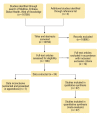Aetiology of community-acquired neonatal sepsis in low and middle income countries
- PMID: 23198116
- PMCID: PMC3484773
Aetiology of community-acquired neonatal sepsis in low and middle income countries
Abstract
Background: 99% of the approximate 1 million annual neonatal deaths from life-threatening invasive bacterial infections occur in developing countries, at least 50% of which are from home births or community settings. Data concerning aetiology of sepsis in these settings are necessary to inform targeted therapy and devise management guidelines. This review describes and analyses the bacterial aetiology of community-acquired neonatal sepsis in developing countries.
Methods: A search of Medline, Embase, Global Health and Web of Knowledge, limited to post-1980, found 27 relevant studies. Data on aetiology were extracted, tabulated and analysed along with data on incidence, risk factors, case fatality rates and antimicrobial sensitivity.
Results: The most prevalent pathogens overall were Staphylococcus aureus (14.9%), Escherichia coli (12.2%), and Klebsiella species (11.6%). However, variations were observed both between global regions and age-of-onset categories. Staphylococcus aureus and Streptococcus pneumoniae were most prevalent in Africa, while Klebsiella was highly prevalent in South-East Asia. A notably higher prevalence of Group B Streptococcus was present in neonates aged 7 days or less. The highest case fatality rates were recorded in South-East Asia. Klebsiella species showed highest antimicrobial resistance.
Conclusion: Data on community-acquired neonatal sepsis in developing countries are limited. Future research should focus on areas of high disease burden with relative paucity of data. Research into maternal and neonatal vaccination strategies and improved diagnostics is also needed. All of this could contribute to the formulation of community-based care packages, the implementation of which has significant potential to lower overall neonatal mortality and hence advance progress towards the attainment of Millennium Development Goal 4.
Figures








References
-
- Singh M, Narang A, Bhakoo ON. Predictive perinatal score in the diagnosis of neonatal sepsis. J Trop Pediatr. 1994;40:365–368. - PubMed
LinkOut - more resources
Full Text Sources
